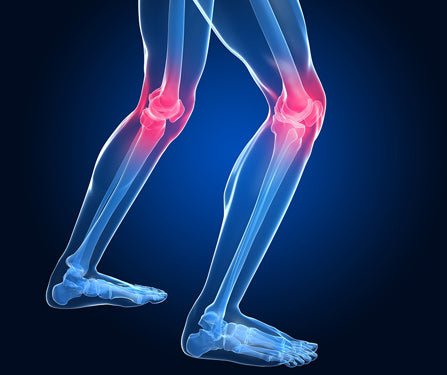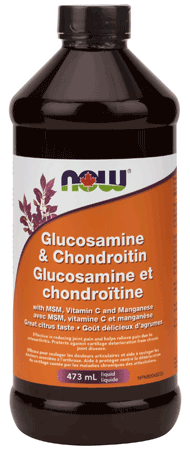When Good Joints Go Bad
 Jayson Kroner
Jayson Kroner
It’s difficult to imagine what the aging process must have been like 100 years ago. That is, before we had access to today’s astonishing technology. It must have been a trying time, to say the least. And while it’s difficult to pinpoint what the most challenging aspect might have been, it’s probably safe to assume that suffering joint health ranked high on the list. After all, science was over 50 years away from even realizing that amino sugars such as glucosamine could stimulate joint repair.
Then again, that was 1904.
As consumers of a much more modern era, we have access to a world of technology at our fingertips. This ultimately affords us the opportunity to heal, mend, cure, alleviate, improve, manage and cope with practically any ailment that this age can throw our way. Among the most notable are those that allow us to enhance the integrity of our joints. Skilled surgeons now routinely rebuild joint structures. Artificial limbs are becoming as common as cough syrups. Equally impressive, there’s a wealth of dietary supplements that can significantly improve our ability to support healthy joint function.
As a result of these advancements, the days of hobbling around in excruciating pain are quickly going the way of the eight-track player. And considering everything we’ve learned, it’s almost impossible to imagine why anyone wouldn’t turn to science to make one’s time on earth more comfortable.
To better understand the nature of diminishing joint function, it’s wise to first understand the anatomical scope of these abuse-prone structures. By definition, a joint is a point of connection between two bones or elements of a skeleton. And while it’s true that they are highly complex in structure, joints have one primary purpose - enabling movement between skeletal bones. The simple truth is that every moving part of our skeletal frame is reliant on how optimally our joints are functioning. When healthy, our range of motion is free moving, easy and unchallenged. When damaged or deteriorating, the effects can often be unbearable.
Cartilage is one of the true culprits in poor joint health. Located at the end of the bones, cartilage essentially allows us to walk, bend, run, jump and flag down speeding taxis. This extremely dense, opaque connective tissue is composed of type II collagen, water and proteoglycans such as chondroitin sulfate. Ideally, these smooth, elastic tissues allow connecting joints to move freely without pain or discomfort. Healthy cartilage is highly durable, rubbery and capable of withstanding remarkable amounts of shock.
Sounds indestructible, right? Think again. By adulthood, even the healthiest cartilage will begin to show its age. Much of which can be attributed to days of youth when we were vibrant and energetic and ready for anything. How many times have you seen a child fall on their rear only to bounce right up and carry on with whatever put them there to begin with? What youngster hasn’t gone airborne off a swing, only to land feet first, scurry back and do it all over again? And how do you explain a high school football player’s ability to take hit after hit for hours everyday? While many of these attributes can be chalked up to the general principles of youth, much of it has to do with the quality of their cartilage, bone structure and joint integrity.
As adults, the outcome would obviously be night and day different in the event that we attempted any of the preceding scenarios. So while it’s impossible to turn back time, there are measures that we can take to safeguard and restore the quality of our joints. Take just a moment to evaluate your daily regimen. Because if you aren’t one of the millions of Americans already living with the frustration of stiff, painful joints, chances are it’s only a matter of time. The following techniques can be helpful in preventing the deterioration of healthy joint cartilage, which in turn might make the basic act of living all the more pleasant.
Learn to Respect Your Limitations
Why not begin with the absolute obvious. Remember that articular cartilage is made up of chondrocytes in an extracellular matrix containing a fibrous network of collagen proteins and proteoglycans. Excessive activity can result in biomechanical damage that stimulates the production of enzymes responsible for breaking down cartilage. As this cushioning surface erodes, bones becomes exposed and begin to grate against one another. Ultimately, this is what leads to swollen, painful joints. By respecting what our bodies can and can’t do, unnecessary over exertions can be easily prevented. At a very basic level, this can provide us with some control over how fast (or slow) our connective tissues decline.
Drink Plenty of Water
Perhaps the most interesting element of cartilage, is that it can hold incredible amounts of water. In fact, as children our cartilage is made up of approximately 85% water! As we slip into adulthood, the percentage declines. And by prime adulthood, we’re lucky to have cartilage that consists of 75% water.  By consuming adequate amounts of water everyday, opposing surfaces stay hydrated and can glide smoothly across each other’s plain. In contrast, dehydrated cartilage is subject to bone friction, joint pain, and cartilage deterioration.
By consuming adequate amounts of water everyday, opposing surfaces stay hydrated and can glide smoothly across each other’s plain. In contrast, dehydrated cartilage is subject to bone friction, joint pain, and cartilage deterioration.
Stay Fit
It’s very simple - the more cargo you carry around, the harder your joints have to work to perform even basic tasks. Eating a diet rich in whole and unprocessed foods, exercising regularly, avoiding excess sugar, and getting plenty of rest is smart, and even more wise for those suffering from stiff painful joints.
Nourish Your Joints
In just under ten years, Glucosamine and Chondroitin have become staple supplements for individuals suffering from joint pain. Glucosamine is a safe, natural amino sugar found within the body that serves as a precursor to Chondroitin - a key component in cartilage that has moreover been touted as a way to reduce the pain and inflammation that accompany joint pain. It works by stimulating the production of glycosaminoglycans and proteoglycans - two key building blocks essential in the formation and repair of articular cartilage. While research continues to evolve, scores of people have reported high levels of success by taking 1500mg of Glucosamine with 1200mg of Chondroitin daily.
Health Disclaimer. Content provided by NOW Foods. Copyright ©2006-2019. Published with permission. Jayson Kroner is a health and fitness journalist, a certified sports nutritionist, and co-author of the book '7-Syndrome Healing'.
